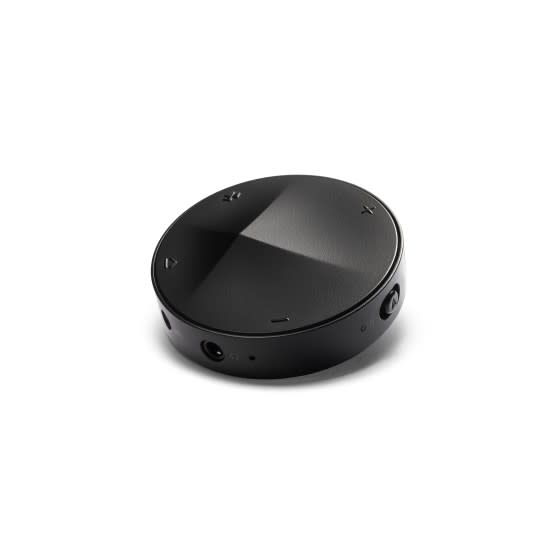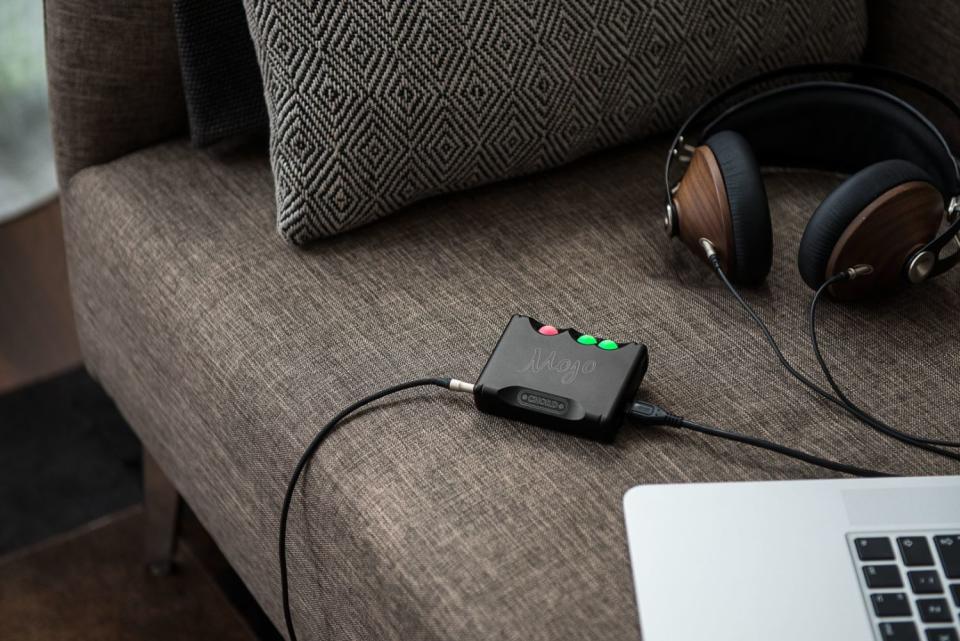Commentary: Listening to music, podcasts, books while staying home? Why you need a DAC more than ever

Everybody is streaming over smartphones, smart computers and smart speakers. But a “smart” anything may be doing its best to outsmart your ears. You need a DAC.
That is to say, you probably need another DAC. There is a good chance that you already own a dozen embedded as chips in your digital devices and appliances. The DAC, which stands for digital to analog converter, is what translates digital data (a series of ones and zeros) into sound waves.
There is a lot more to it than that, of course. Considerable electronic sophistication is required to get decent sound, but it always boils down to this: The better the DAC, the better the sound. A DAC makes all the difference in the world, be it for music (however high or low the resolution), audio books, podcasts, YouTube videos, Zoom conferencing and all the online rest. Vinyl buffs, of course, are excused.
Yet the DAC in the device you may be holding at the moment is likely not up to the job. Nor is it all that difficult or necessarily expensive to do something about that.
The reason for all this is because algorithm-savvy Apple, Samsung, Google and so many others can get away with it. When it comes to sound, the brain can be tricked. Apple and others figured that out early with heavily compressed music using MP3 and other formats, which made the iPod such a sensation. The goal was to keep down the amount of data needed for each song, which is how music was initially sold. That way the iPod could hold more music.
Apple and others rightly understood that if some overtones above the range of human hearing are eliminated, you are not going to notice. These overtones give sound its color and texture and often emotional character, but we have the mental powers to figure what is missing, and brains simply supply the missing data.
I had supposed proof of this long ago while studying computer music in its earliest and most unwieldy days at Stanford. I had a friend who played organ, and I would walk past the campus chapel listening to her practicing. When I heard her, I would go in to say hello. But sometimes she wasn’t there.
An audio engineer explained to me that I had also been walking by machinery that was producing white noise, which contains all the sound frequencies of the spectrum. He figured I must have been wanting to hear the organ so badly that my brain picked out of the white noise what I wanted to hear. I’m still not sure that that was really true, but I have no other explanation other than being made delusional by too much computer coding.
Still, there can be no question of our ears' ability to play tricks on us. I’ve experimented with YouTube videos, and it can seem as though when streaming at higher data rates, the sound gets better along with the picture. But blind listening suggests that it doesn’t. My DAC shows that nothing changes.
During our coronavirus stay-home restrictions, so much music is being made over Zoom, but ensemble members playing together from their homes sounds crude. The microphones in phones and tablets aren't that hot. The impact comes from the will of players to overcome any and all obstacles to make their music heard when it most needs to be.
We get along perfectly well without bells and whistles, and we are learning in the pandemic to return to the basics. You can listen to an audio book on your phone and you will understand the words, as well as sense the character of the reader's performance. But outfits like Audible and the way many podcasts are recorded (there is a considerable range) have really low-end fidelity. What a minimal DAC upgrade supplies is juice. The voice sounds more life-like, expression is enhanced, and in that humanity lies.
You may not consciously realize what is happening or why, but you listen more involved, more moved. You listen longer with less fatigue. When it comes to music, this clearly matters that much more.
So, what to do?
I’ve been modestly and with varying degrees of success and frustration experimenting with DACs since they started being commonly offered as separate components more than a dozen years ago. But it is only now that they have reached a level of simplicity, versatility, availability and affordability that they can be widely used.
A week no longer passes when there aren't new DACs on the market. The array of choices and formats is already dizzying, depending upon whether you are using a mobile device or computer or hi-fi system, and whether you insist on Bluetooth. Prices for the most basic ones begin around $100 (although there are even cheaper DACs from off-brand companies such as Fiio that perform far beyond their $60 to $70 prices).
At the other extreme, you could buy a well-equipped Porsche for the princely price of a top-of-the-line DAC with all the frills and cables and such from the Silicon Valley audio whizzes at MSB Technology. That is not something you hook up to an iPhone 11 Pro, but rather to a half-million dollars' worth of equipment that includes loudspeakers at least twice as tall and twice as heavy as you are.
Back to the real world. A phone may not have the power to drive the fancier DACs, but there are inexpensive ones resembling a computer thumb drive that do and surprisingly well. I’ve owned two in the Dragonfly series by AudioQuest that hooked to my car’s audio with pleasure. That is until they broke (each lasted a little more than a year), but given their growing popularity, build quality may have improved.

Some of the better computer speakers come with built-in DACs that are an improvement, but an outboard DAC like, say, the Chord Mojo, is probably a lot better, and it's portable (though it requires charging).
Bluetooth is never ideal for audio, and I mostly avoid it. But even I make an exception for the Astell & Kern XB10. This small puck that retails for $99 is a DAC with a jack for earbuds that you connect to a phone via Bluetooth. I am rarely without it.
A post shared by Astell&Kern (@astellnkern) on Jun 27, 2018 at 5:10pm PDT
Much home audio equipment, especially amplifiers and streamers, are coming with high-quality built-in DACs, making everything easier. The one problem I’ve run into, though, is that DACs are changing quickly and go out of date much more quickly than other components. I'm using a DAC from a local company, Schiit Audio in Valencia, that makes budget-priced DACs not meant to keep up with changing trends but instead offer the rich character of the finest analog sound that can make vinyl so addictive. It is what is helping keep me musically sane and connected in this coronavirus crisis.
Whatever route you chose, though, and whatever your digital sources, from the lowest to the highest, remember that a DAC is translating the world for your ears.
For the record:
3:45 PM, Apr. 21, 2020: An earlier version of this column said DAC was short for digital audio converter; it’s short for digital to analog converter.

